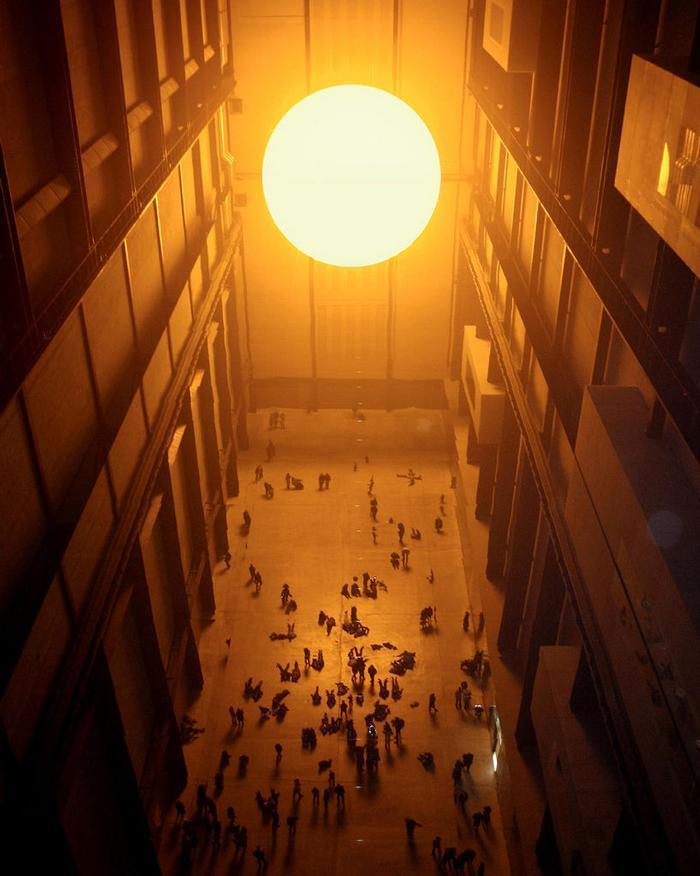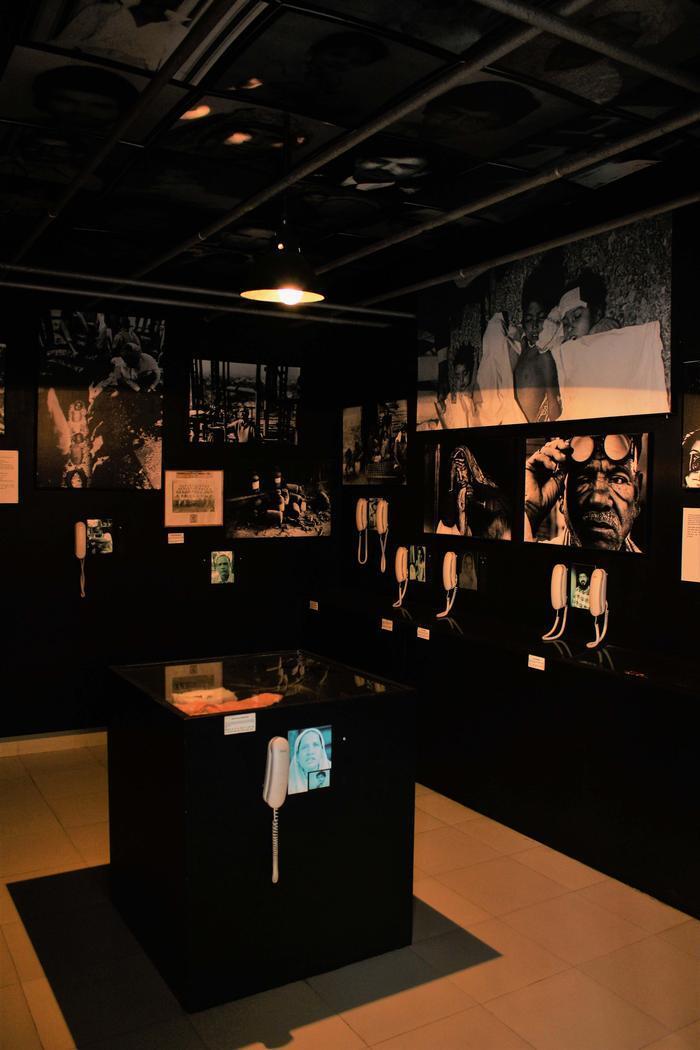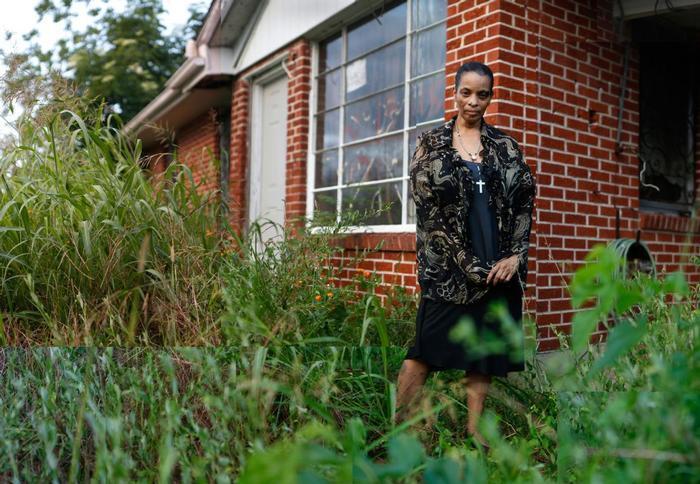Reva Saksena and Mallika Sarabhai - EssayTo Pride From Prejudice: An Architectural TransitionArchitecture has long been a testimony of society. It has shaped not only society’s own identity, but that of its so-called ‘contradictions’ as well. While the identity of the ‘accepted’ collective continues to follow the norms and set up new ones, another identity is parallelly configured in the shadows discarded by the norm. The social needs of such individuals, although different, begin to be met outside of the accepted. This in turn links them to an alternate collective that finds solace in shared differences.
Over the years, a wide range of thought-provoking perspectives has been curated in the Berkeley Prize pool of essays. In the larger context of architecture being a social art and facilitator of community engagement, these essays have highlighted ideas and efforts for social upliftment of underprivileged communities across the globe - the homeless, street-children, squatters, slum dwellers, migrants, minority ethnic groups, destitute women and differently-abled. These explorations have underlined the larger social responsibility for Architecture to amend and rehabilitate inequitable approaches plaguing society. Communities have struggled and continue to struggle to live in cultures where being different is not accepted. Architecture has even tried to undo damaging practices in instances where differing communities were forced to accept extinct beliefs or worse, sacrifice their own to be acknowledged.
However, one such ‘contradiction’ of society seems to have missed the attention of Berkeley Essay Prize authors so far. It has also largely been left unaddressed by Architecture, especially in India - the third Gender.
India’s trans-community is still struggling to find a voice and faces rampant social stigma. Negative perceptions and ostracism has pushed them to the fringes of society and dire living conditions. Generally, they eke out a living by singing and performing at people’s houses on important social functions such as childbirth and marriage. These are the only occasions when their visits are acceptable in people’s houses. At all other times, they are shunned and left to seek the companionship of their like, forcing a close-knit community with practices that are uniquely their own. They endure violence, harassment and discrimination, both at home and in public spaces; emphasizing that peripheries – even without distinction of social class – spell danger. Navigating this dichotomy is an everyday affair.
This is the situation of the trans-community all over the Indian subcontinent. However, what distinguishes the Indian trans-community from those in other parts of the world is, ironically, its high social status in ancient Indian society. Vedic literature includes references to a third gender- ‘trityaprakriti’ or ‘third nature’ and recognises absence of procreative capability of a person as a natural process. In fact it is so natural that Sanskrit language, apart from the masculine and feminine, has a third gender, the neuter gender or ‘napunsakalinga’. While Indian society was progressive about the acceptance of transgenders, much changed with the imposition of the ‘Criminal Tribes Act’ in 1871 by the British. This denied the community basic civil rights and labelled them as ‘criminals’ and their acts ‘a breach of public decency’.
Fortunately, India has recently repealed the draconian law in a series of landmark decisions. The judgement grants legal recognition to the third gender, fundamental and socio-economic rights to all trans-citizens and decriminalises homosexuality among others. The most recent addition to the law has been the Right of Residence and penalties for offences against transgender individuals including denial of right of public passage or use of public places. This opens immense possibilities for architecture to mainstream this marginalised section of society and give shape to its dreams.
Architectural education gives us the sensibility to understand these sections of society and to look beyond the resentful veneer of their existence. Their state in India is no different from elsewhere in the world, especially in not so developed nations and crime laden societies. Espacios Oscuros, an initiative by Chilean architects María González and José Franco, is a keen observation of ‘illegitimate interactions’ that form urban experiences of the LGBTQIA+ community in public and private spaces in Santiago de Chile. Despite inherent cultural differences across nations, the trans-community has certain universal needs: privacy, concern for safety and need for own space.
Most architecture today is designed for particular bodies- to the exclusion of others. Often spaces which are unconsciously ‘labelled’ through choice of colours, materials or the extent and nature of detail and ornamentation, scream of gender bias. These silent cues are encouraged and accepted by mainstream society, leaving little scope for gender neutral spaces in public areas. Members of the trans-community are then left with little choice but to assume a conscious presentation of their conforming gender, to ensure their own safety and comfort of people around them – to just exist in public spaces.
The authors have had an opportunity to study the life and living conditions of Indian trans-community in some detail.
The transgenders in India follow a unique set of traditions that have partly been dictated by their historical status and religious beliefs. Most transgender communities live in abject poverty in ghetto-like conditions. Although these communities largely exist in urban slums, they are barely visible. By inhabiting spaces discarded by the system, this community has unconsciously generated its own living fabric.
Although the community is close-knit, there exists some social structure. Localities in an urban area are divided, each belonging to a 'Guru’. Every Guru is then responsible for taking care of a community of ‘chelas’ or disciples and running their collective accounts, which are used to support the community’s daily needs. The ‘Guru-Chela parampara’ is an ancient Indian tradition. The chelas live together with their Guru in a ‘Gharana’ or household. This is a rather closed building not more than two storeys tall, with an obscure entrance leading to a small courtyard within. Most rooms open into a courtyard. Hardly any windows look outside. A pedestal at one end of the court defines the Guru’s place. Dancing, singing and music which form a central part of their livelihood are practiced here in the court before the Guru, albeit only during particular hours of the day, so as not to invite resentment from the neighbours. A smaller space called ‘Shringaar’, with colourful ‘saris’ draped on walls and a mirror on a raised platform, overlooks the courtyard. This is where the transgenders adorn themselves with ornaments and flowers and indulge in community activities in the morning like oiling hair and applying makeup. Located besides the Shringaar, is usually the Puja room, or worship place. On the ground floor is a community kitchen, one of the most active spaces of the Gharana.
Instances of violence against the transgender community and the stigma causes permanent discomfort and pushes them into a state of constant alertness. The Gharanas offer a safe space for the confident expression of identity. Children who have run away from home or abandoned because their families are unable to reconcile with their identity, need care and some love. Non-blood relatives are their new family and the Gharana their new home, away from the accusing eyes of society.
Architectural education and awareness can enable us to translate the trans-community’s unique customs and requirements - cultural, sociological and economical - into habitable spaces. Architecture can conceive humanitarian solutions that harmonize requirements within inherent constraints and integrate them with practical standards. It has the power to convert abstract into concrete.
The trans-community’s specific needs and social requirements on the one hand and the need to encourage their integration in the social mainstream are the dual challenges which an architect is challenged to meet. Aided by new aspirations of the trans-community, yet honouring its social setup, an architect has immense opportunity to evolve quality spaces.
Most trans-people in India live in a tightly linked community within the same social setup. One wonders if this is by choice or dictated by concerns for safety and existence. Like all human beings, the trans-community too has individuals with different personalities, preferences and ideas that must be addressed in the larger interest of the community’s integration with the mainstream.
However, despite a promising legislation, social thinking cannot change overnight. Trans-community would have to be comforted by the security of their existing social setup. Architecture would then need to provide continuity between their present lifestyle and their more emancipated future.
The journey of the trans-community in India from its present state to becoming part of the mainstream Indian society will be long. It is clear that this journey of transformation can only happen in stages and architecture has to support this through appropriate spaces. The architect, applying his creativity, needs to design a suitable architectural model to facilitate transformation through stages. One such proposed model likens the transformation to the blossoming of a flower through the stages of a bud, in between partial bloom and finally the flower in full bloom. This kind of contiguous development of spaces is well suited for seamless transition and most likely to be seen by the transgender community as its own.
The Bud
This is the most fundamental space, not unlike the elements of the Gharana, comfortably catering to the existing social and cultural requirements and specific needs of the community. At the same time, modern design may offer flexibility and customizability to cater to individual personalities and preferences of its members and allow opportunity for individual expression in a collective society. Most importantly, it meets the most crucial needs of its members– privacy, safety and own space. Also included may be the living spaces for the abandoned street children who are often adopted by transgenders.
The in-between
The spaces here must offer the inhabitant the opportunity to explore the larger society and choose his role in it at his own pace, from within the comfort of the threshold. These could be physically manifested as adult literacy, vocation and skill building centres, art studios, workshops etc. This will help initiate members into alternate professions. Having a nursery school here serving the needs of both transgender and street children may be a good idea. A crèche run by trans-genders for small children of working parents in the neighbourhood will be a very useful contribution of the trans-society.
The Flower
The crossing of the threshold to find oneself may be both challenging and liberating. At this stage, there needs to be an opportunity for greater social interaction where members of mainstream society start getting accustomed to the involvement and contribution of the trans-community on a day-to-day basis. This will allow greater trust and acceptance, leading to healthy interdependence. Spaces here may allow transgenders to offer tailoring, hairdressing and other useful services to public at large. Stores run by transgenders selling arts and crafts created by other members of the community may be included. Other spaces like cafes and entertainment zones may offer opportunity for fair interaction and acceptance by the mainstream society. A primary school, open to street children, slum dwellers and children of other marginalised groups would be a welcome addition towards further acceptance of the trans-people.
A comprehensive development involving an architectural model like the one described above may not yet exist in India. However, recent examples of architecture promoting strong interaction between the trans-community and general public are worth mentioning.
In a first in India, a Gender park in Kozhikode, Kerala, offers a gender-neutral space for interaction and engagement between all people in common recreation space. TATA Institute of Social Sciences has become the first Indian university to cater to residential needs of non-binary students. Another good example here would be the Pride Metro Station, Sector-50 Noida. Dedicated to transgenders in and around Noida, it encourages ‘inclusion and meaningful participation of members of the trans-community’ under the Transgender Persons Act, 2019. While the Station is open to all passengers, all employees belong to the trans-community. The station has been painted and adorned with unique artwork that helps break stereotypes of the community. The employees have found new satisfaction in their jobs and have experienced a conscious change in attitude of the common public.
Kalki Subramanium, a local transgender rights activist, is a beaming example of resilience and determination. Kalki braved discrimination, exclusion and harassment to pursue journalism and started Sahodari ("sister"), a self-supported organisation to support the trans-community. She employs visual media like photographs, art and text to educate transgenders about mental health, transitioning and above all, their right to dignity. One such project, ‘Transhearts’ involves free workshops on ‘expressive painting’ to help trans-people express themselves and earn a dignified living. The exhibition of these artworks in public spaces in cities and towns across India has helped people empathise more with the community.
The authors feel hopeful that spreading social awareness about the issue may help in addressing needs of the trans-community in India. ‘Mann Ki Baat’ (Inner Thoughts) is a monthly broadcast initiative by the current Prime Minister of India. It is a popular forum for discussion with the public, inviting people’s thoughts. Many new ideas have been realised and actively implemented through this platform. The authors recognise this to be a powerful medium to draw attention to the state of the trans-community in India. Funds for Government housing for the underprivileged are already in place and 10.6 million houses have been sanctioned. There is just a need to highlight the requirement of special housing for the transgenders within this scheme. The Architectural model described earlier can be proposed to meet this requirement. Credible NGOs working for the trans-community may be approached to lobby with the government. Writing articles on the subject in the newspapers and architectural journals may sensitize the public as well as create a business case for builders to take up such housing and development projects. In addition, appealing to corporates to undertake projects for the trans-community as a part of their Corporate Social Responsibility obligation may go a long way in implementing creative architectural models. Mainstreaming the trans-society is likely to make important contribution to India’s GDP.
It is granted that Architecture may not directly be able to change social customs or break ‘accepted’ social norms. But it can direct a society, through tangible and intangible cues, to reshape its perceptions of itself. Its very relevance lies in its potential to harness people’s ideas that drive interaction and inclusiveness. The architectural expression is completely intertwined with society’s aspirations and sensibilities. It holds the key to lead communities to their truest potential by instilling an emotion that may otherwise only be elicited from the self: Pride.
Pride is a complex emotion, as capable of creation as it may be of destruction. If realised collectively, pride may motivate change within a community to ameliorate its own circumstances. Reinforce confidence. Create opportunities to contribute and become relevant. If a community can truly own a space, engage with it and finally, as an epitome of their existence, take pride in it; that is the ultimate satisfaction for an architect. Trans-community in India is no exception.
“Architecture is neither a niche specialty nor a passive observer of society: Architecture is an expression of will.”
- Nathan Koren, 2000 Essay Prize Winner - First Place. Additional Help and InformationAre you in need of assistance? Please email info@berkeleyprize.org. |




